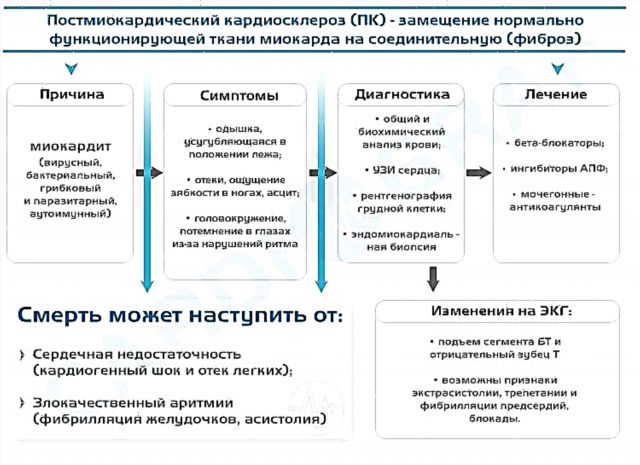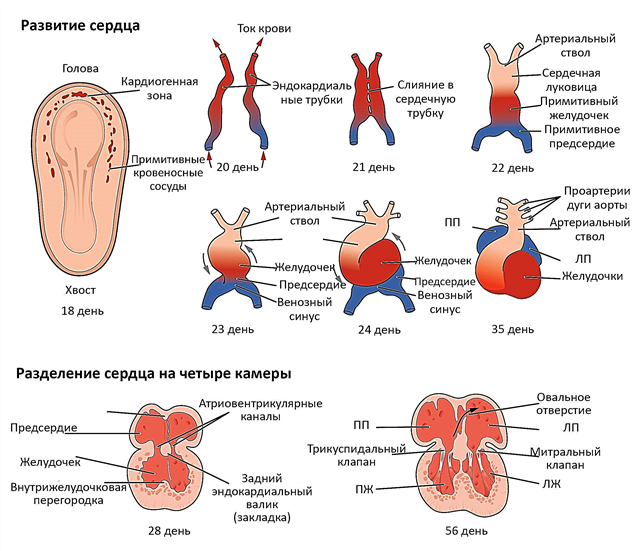Cough is the most common symptom of respiratory and heart disease. With its help, phlegm and foreign substances are released from the respiratory tract. The cough reflex occurs as a result of involuntary compression of the vocal cords, relaxation of the diaphragm and an increase in the tone of the long-term muscles. These processes lead to increased pressure inside the chest. During the opening of the vocal cords, air is rapidly expelled through the narrow passage of the trachea and open vocal cords. The difference between the pressure inside the chest and the atmosphere provokes a cough.
What causes
 Cough is the result of an infectious process, exposure to chemical irritants or a sharp drop in air temperature. A paroxysmal cough occurs with the coughing up of mucus, which is different in smell, color and consistency.
Cough is the result of an infectious process, exposure to chemical irritants or a sharp drop in air temperature. A paroxysmal cough occurs with the coughing up of mucus, which is different in smell, color and consistency.
Causes of paroxysmal cough:
- Acute bronchitis. Most often, this disease is a consequence of acute respiratory viral infections. Dry cough attacks are accompanied by itching and burning in the throat or chest. Seizures are often so severe that they cause headaches and loss of consciousness. Short-term fainting occurs due to a sharp constriction in the sternum, which reduces the flow of blood to the heart. After 48 hours, a large volume of viscous secretion is separated, the patient feels general weakness, chills, headache and muscle pain, body temperature may rise. Difficulty breathing and wheezing are felt when listening with a stethoscope. There is severe shortness of breath, a blue tint of the skin and mucous membranes, the sputum is viscous and difficult to separate, the cough reflex ineffectively copes with its excretion, wheezing in the lungs is heard, especially when exhaling while lying down.
Severe coughing attacks in an adult with mucous secretion, increased body temperature, rapid pulse and breathing indicate the transition of acute bronchitis to the stage of bronchopneumonia. This disease, when listening to, is characterized by a quiet, vague and high-frequency sound with wheezing.
- Croupous pneumonia. At the initial stage of the disease, a coughing attack is dry and painful, after 48 hours, when coughing up, there is a separation of a rusty secretion. The patient shivers, the body temperature rises, the skin of the face turns red, the lips and nose turn blue, rashes in the form of herpes may appear on the face, breathing slows down in the affected part of the sternum. When breathing, the patient feels pain, rapid heartbeat and breathing. During a medical examination, a trembling voice and bronchophonia, hard breaths with wheezing are observed.
- Influenza pneumonia begins with a dry cough, later purulent-mucous blood discharge is cleared up. The patient is often nauseous, the body temperature rises, the general condition worsens, and severe pains are felt in the chest area. Muscle weakness, shortness of breath, cyanosis of the skin and painful rapid heartbeat appear. In especially severe cases, there is a change in the composition of the blood, the development of collapse, pulmonary edema, coughing up blood and difficult breathing.
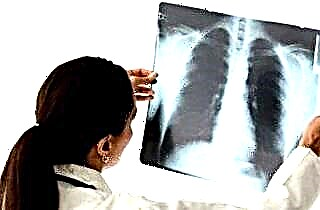 Acute lung abscess (lung gangrene). The patient suffers from a paroxysmal cough with a single discharge of a large volume of secretion with a characteristic fetid odor. The patient feels sick, chills, fever, shortness of breath and cyanosis of the skin persist.
Acute lung abscess (lung gangrene). The patient suffers from a paroxysmal cough with a single discharge of a large volume of secretion with a characteristic fetid odor. The patient feels sick, chills, fever, shortness of breath and cyanosis of the skin persist.- Bronchiectactic disease. The cough is prolonged, with profuse mucus with impurities of pus. The patient has a fever, weight loss, nausea, enlargement of the tips of the fingers and toes (a symptom of drumsticks), deformation of the nail plates (a symptom of "watch glasses"), an increase in the intercostal space, the sternum is difficult to squeeze. When listening, there is a hard, weak breathing with scattered dry wheezing.
- Bronchial asthma. The patient is overtaken by an attack of coughing, which is stopped with bronchodilator drugs. A cough also occurs at the end of an attack of bronchial asthma, a small amount of transparent secretion may be released.
- Pleurisy is dry. It is characterized by a sharp sharp pain in the sternum, which intensifies with a cough reflex and full inhalation. The breathing of the affected part of the chest is slow, pleural friction noises are heard.
- Pulmonary edema. The patient continues to have shortness of breath, a blue skin tone, a dry cough appears, turning into a wet cough with secretion. With pathology of the lungs, the patient becomes easier after coughing up, with heart failure, there is no improvement. Moist rales are clearly audible over the lungs.
- Broncho-pulmonary malignant tumors. In the overwhelming majority of patients with this diagnosis, paroxysmal cough appears at the earliest stage of the disease. This is due to the neoplasm and transformation of the bronchi under the influence of the inflammatory process and compression of the lung. Coughing up wet, with pus and blood. Lung cancer can be recognized if there is a prolonged dry, debilitating cough, chest pain, coughing up blood, shortness of breath, and fever. Later, the tumor grows and squeezes the adjacent organs. The patient may have a hoarse voice, swelling of the face, severe wheezing.
- Neoplasms in the lumen of the bronchi. A paroxysmal cough can be the root cause of a tumor in the lungs or bronchi. Large neoplasms block the normal functioning of the bronchi and trachea, small ones provoke suffocation, pressure and severe coughing up blood. When the lumen of the lungs are blocked, inflammation of the damaged tissues appears, and with complete blocking, the lung collapses and is excluded from gas exchange.
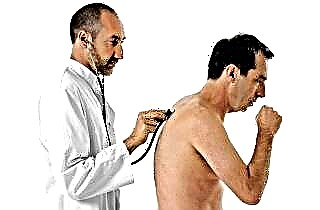 Mediastinal syndrome is a disease caused by inflammation or neoplasm in the mediastinum. At an early stage, breathing is disturbed, the trachea and bronchi are compressed, which provokes a paroxysmal cough and shortness of breath. The reflex is strong, painful, sometimes with vomiting. Hearing noisy breathing is heard, the pressure of the veins, arteries and recurrent nerve increases, the voice changes and disappears.
Mediastinal syndrome is a disease caused by inflammation or neoplasm in the mediastinum. At an early stage, breathing is disturbed, the trachea and bronchi are compressed, which provokes a paroxysmal cough and shortness of breath. The reflex is strong, painful, sometimes with vomiting. Hearing noisy breathing is heard, the pressure of the veins, arteries and recurrent nerve increases, the voice changes and disappears.- Pulmonary tuberculosis. With this disease, the nature of the cough is different - from mild morning to paroxysmal.
Symptoms accompanying a cough
Patients often experience wheezing when breathing. The causes of these sounds are due to an excess of pus and phlegm in the enlarged bronchi. Wheezing is very clearly heard with a phonendoscope, and strong ones are heard even at some distance from the patient without medical devices. The patient feels internal vibrations in the chest, which periodically disappear after a coughing fit. There are other symptoms as well:
- Shortness of breath most often occurs in the progressive stages of the disease. The reasons are caused by the obstruction of air to the alveoli.
- Chest pain always manifests itself during exacerbations, when the process of inflammation proceeds in an acute form, and pus accumulates. When this process reaches the pleura, which has nerve endings, people complain of chest pains. Sensations manifest themselves in different ways: from dull weak seizures that persist for several days to a sharp sharp jolt during inhalation. The lungs do not have nerve endings, so pain from this area is not felt.
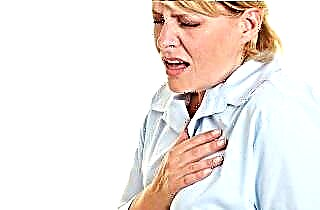 Heat. This symptom means an inflammatory process that occurs as a result of the ingress of toxins into the blood. Microparticles are secreted by microbes at the source of the disease, and also fall into the period of resorption of pus. The forced formation of pus pushes the temperature up to 39. Antipyretic drugs help a little to alleviate the condition, but it is unlikely that it will be possible to set the temperature corresponding to the norm.
Heat. This symptom means an inflammatory process that occurs as a result of the ingress of toxins into the blood. Microparticles are secreted by microbes at the source of the disease, and also fall into the period of resorption of pus. The forced formation of pus pushes the temperature up to 39. Antipyretic drugs help a little to alleviate the condition, but it is unlikely that it will be possible to set the temperature corresponding to the norm.- Hippocrates' fingers - an increase in the size of the terminal phalanges of the fingers, which occurs due to the development of respiratory failure. This symptom rarely appears in people under 45 years of age. Its reasons are not fully understood. It is generally accepted that the nail phalanx becomes more porous due to oxygen deficiency and, accordingly, expands. Most often, the symptom manifests itself on the hands, but minor changes may also be visible on the toes. During the period of manifestation, a person's fingers are like drumsticks. The nail plates swell, transforming into a domed shape. Sometimes this phenomenon is called the "symptom of watch glasses" because of the external resemblance. A person's nails will no longer return to their previous shape and will remain so for the rest of their lives.
- If a person has close contact with allergens, then exacerbations occur more often. Difficulty breathing interferes with the supply of oxygen to the body in the right amount, so the patient feels depressed and exhausted, suffers from migraines and feels dizzy. Intoxication further aggravates this process.
- Thinness. During the period of the disease, a purulent process takes place, and with it a loss of appetite. During an exacerbation, the patient looks weak and thin.
First aid
 It is better to lay the patient down, but the head should be raised. For a better secretion, you need to take urgent antitussives. If the patient's condition is serious, inpatient treatment is necessary.
It is better to lay the patient down, but the head should be raised. For a better secretion, you need to take urgent antitussives. If the patient's condition is serious, inpatient treatment is necessary.
When foreign objects enter the trachebronchial tree, the patient is hospitalized in a surgical or otorhinolaryngological hospital. With pneumonia, they are sent to the therapeutic department, with gangrene of the lungs - to a therapeutic or surgical hospital, depending on the neglect of the disease. The definition of hospitalization for other diseases is determined by the general clinical picture of the patient.
With allergic cough, asthma, chronic obstructive bronchitis, allergic and polypous rhinosinusopathy, an allergist is treated. An otolaryngologist treats aspiration, ENT pathology, asthma and chronic bronchitis. A pulmonologist prescribes treatment for interstitial lung diseases, chronic bronchitis, bronchiectasis, pleurisy, lung gangrene.
A gastroenterologist treats gastroesophageal reflux and other types of coughs caused by diseases of the gastrointestinal tract. The thoracic surgeon prescribes treatment for bronchiectasis, lung gangrene.
With the cardiovascular nature of cough, a conclusion of a cardiologist is necessary, with tuberculosis and sarcoidosis, a phthisiatrician is needed. The oncologist will answer all questions regarding malignant tumors. An endocrinologist treats pathological processes of the thyroid gland. The neuropsychologist will give advice on psychogenic cough.

 Acute lung abscess (lung gangrene). The patient suffers from a paroxysmal cough with a single discharge of a large volume of secretion with a characteristic fetid odor. The patient feels sick, chills, fever, shortness of breath and cyanosis of the skin persist.
Acute lung abscess (lung gangrene). The patient suffers from a paroxysmal cough with a single discharge of a large volume of secretion with a characteristic fetid odor. The patient feels sick, chills, fever, shortness of breath and cyanosis of the skin persist. Mediastinal syndrome is a disease caused by inflammation or neoplasm in the mediastinum. At an early stage, breathing is disturbed, the trachea and bronchi are compressed, which provokes a paroxysmal cough and shortness of breath. The reflex is strong, painful, sometimes with vomiting. Hearing noisy breathing is heard, the pressure of the veins, arteries and recurrent nerve increases, the voice changes and disappears.
Mediastinal syndrome is a disease caused by inflammation or neoplasm in the mediastinum. At an early stage, breathing is disturbed, the trachea and bronchi are compressed, which provokes a paroxysmal cough and shortness of breath. The reflex is strong, painful, sometimes with vomiting. Hearing noisy breathing is heard, the pressure of the veins, arteries and recurrent nerve increases, the voice changes and disappears. Heat. This symptom means an inflammatory process that occurs as a result of the ingress of toxins into the blood. Microparticles are secreted by microbes at the source of the disease, and also fall into the period of resorption of pus. The forced formation of pus pushes the temperature up to 39. Antipyretic drugs help a little to alleviate the condition, but it is unlikely that it will be possible to set the temperature corresponding to the norm.
Heat. This symptom means an inflammatory process that occurs as a result of the ingress of toxins into the blood. Microparticles are secreted by microbes at the source of the disease, and also fall into the period of resorption of pus. The forced formation of pus pushes the temperature up to 39. Antipyretic drugs help a little to alleviate the condition, but it is unlikely that it will be possible to set the temperature corresponding to the norm.